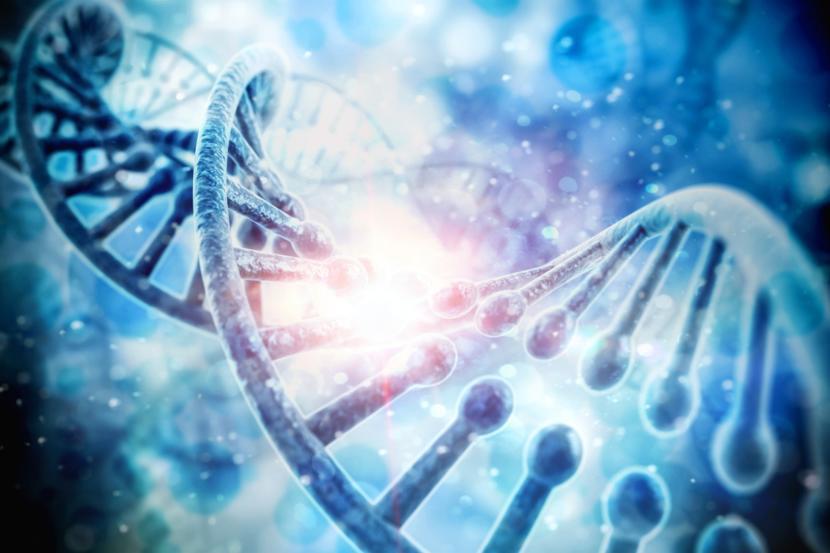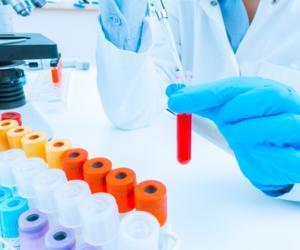Researches Discover Clues as to Why Exactly BRCA Mutations Can Cause Cancer

When the BRCA1 gene mutation was found by scientists supported by the National Cancer Institute to be hereditary predisposition to breast cancer, it was a major breakthrough; however, for many years, researchers have found themselves puzzled by the BRCA1 gene. Its ability to cause breast and ovarian cancer is clear, as women who genetically possess a deficient copy of BRCA1 also have a 65 percent chance to develop breast cancer and a 39 percent chance to develop ovarian cancer by the age of 70, but the question "why" was left to be answered. Now, researchers at The University of Texas Health Science Center, now referred to as UT Health San Antonio, have had a breakthrough. Rong Li, Ph.D., and colleagues have discovered a previously unrecognized function of BRCA1 that may explain the cancer correlation. After 15 years of studying BRCA1, they were able to publicize their findings on June 26 in Nature Communications.
Background on BRCA1
BRCA1 is a member of a class of genes researchers have deemed as "tumor suppressor genes." The function of these genes is to prevent growth of cancerous cells, resulting in BRCA1 having a part in cellular pathways to repair damaged DNA. So, when there is a BRCA1 mutation, these pathways will be more likely to make cells collect DNA damage due to their lessened ability to repair cells. If there is enough damage, this can lead to cancer.
Why the tissue specificity?
Professor of Molecular medicine at UT Health San Antonio and a holder and manager of the Tom C. and Patricia H. Frost Endowment to Advance Cancer Research and Education, Dr. Li, explains, "BRCA1 plays a very important role in DNA repair in almost any cell type you choose to study. This is a function of BRCA1 that presumably is important for every cell type in the body. But we also know there is a tissue-specific cancer predisposition associated with BRCA1. If a woman loses BRCA1 function, breast and ovary are the two places that preferentially develop tumors. Is there something else BRCA1 does that contribute to this specificity?" It is this specific question that Dr. Li asks that has been answered by his work in Nature Communications. The publication offers many exploratory and intriguing explanations, but in short, his answer is yes.
How studying human tissue resulted in these new discoveries
The way that Dr. Li and his team conducted the study began with obtaining human breast tissue specimens. These were from breast oncologists including many being led by Islail Jatoi, M.D., Ph.D., FACS, and Richard Elledge, M.D., at the UT Health Cancer Center of UT Health San Antonio, also by Oscar Ochoa, M.D., FACS, at PRMA Plastic Surgery.
As Dr. Li and his team embarked on their study, they compared BRCA1 carriers versus non-carriers and found more than just the expected differences. They found that gene expression-related stress in BRCA1 carriers is higher than those who do not carry the gene. This stress is also only found to be higher in luminal epithelial cells, the origin of BRCA1-related breast tumors. Within these luminal epithelial cells, the stress is higher in estrogen-responsive genes.
It has been found that not only are certain inherited mutations capable of increasing one's risk of falling to cancer, but also that the magnitude of risk is directly intertwined with where it is that these mutations are specifically located. Not only that, but family history also affects the impact and magnitude of these effects.
What is gene expression-related stress?
Gene expression-related stress is what happens when cells expressing genes to proceed with certain functions. Another way to think of this is to think of cells "turning on" the genes in order to follow through with the tasks. This process is capable of damaging genetic blueprints and/or DNA which can result in abnormal structures- or what scientists would simply refer to as stress.
Location of the BRCA1 mutation
It is not only having the BRCA1 mutation that influences the possibility of developing breast or ovarian cancer, but the placement of it within the body. In certain areas of the body, women with the BRCA1 mutation are more at risk for developing these cancers than women who have the same mutation in a different location. Therefore, it is not possible to treat all women with these mutations in a blanket fashion, as each patient's needs and risk will be different based on their personal mutation and its location.
How should women with mutations proceed?
When women are aware of that they have inherited a BRCA1 mutation, they may wish to utilize preventative measures towards breast or ovarian cancer. However, it is important to remember that intensive early surveillance, chemoprevention, prophylactic surgery, and other rigorous treatments all come with their own risks as well. It may also be relevant that BRCA1 mutations may have the ability to affect a tumor's response to treatment, potentially lessening the effectiveness. The risk of not only the cancer, but the treatment, should always be considered by women with these mutations. Families with breast or ovarian cancer in their histories have access to genetic test results, to assess their risk and find treatment.
Likelihood of women with BRCA1 to develop breast or ovarian cancer
Women with a deficient copy of BRCA1 have a 65 percent chance to develop breast cancer by age 70, whereas those with normal BRCA only have a 12 percent chance. Those with a mutated BRCA1 also possess a 39 percent chance to develop ovarian cancer by the age of 70. These statistics make preventative measures important to consider for those with a BRCA1 mutation. The peak incidence of these women who do develop breast cancer is observed to be between 41-50 years old. When analyzing the peak incidence of these women who do develop ovarian cancer, researchers observed that the risk of developing the cancer increased with heightening age, until around 61-70 years old. The risk of breast cancer among women with BRCA1 mutations is increased with first-degree or second-degree relatives who have been diagnosed with breast cancer. However, the family history with ovarian cancer did not considerably change the risk of those with BRCA1 mutations to develop ovarian cancer.
How Dr. Li's work transcended previous studies
Most previous studies were only accessing retrospective data, that is, they were studying women who had already been diagnosed with cancer. However, in order to properly analyze the potential of the BRCA1 gene and its potential to cause breast and ovarian cancer, in order to see why, it's vital for research to be more exhaustive than only retrospective data, looking at the population of potential patients as a whole.
A word from Dr. Li
Dr. Li explains, "the breasts and ovaries are two major estrogen-responsive sites in a woman's body. This zooming in on the stress location is the connection we sought to make between BRCA1 dysfunction and breast and ovarian cancer predisposition. This is a very attractive model to further test, and points to an interesting direction for drug development."
Moving forward with the study
The study that we have discussed, found in Nature Communications, was primarily focused on breast tissue. However, moving forward, similar studies are going to take place regarding ovarian tissue.
References
https://www.cancer.gov/news-events/cancer-currents-blog/2017/brca-mutation-cancer-risk
https://www.cancer.gov/research/progress/discovery/brca














